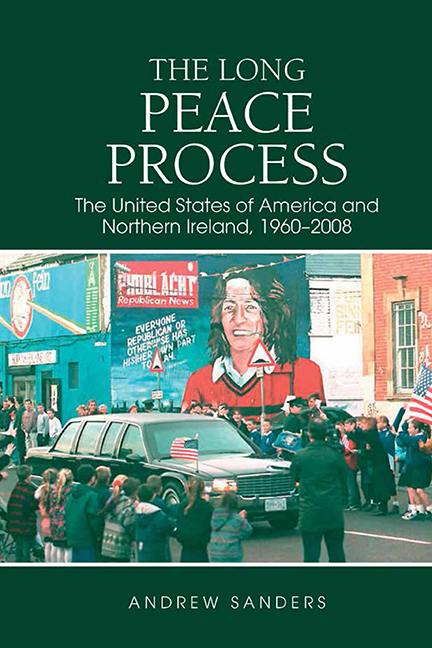Book contents
- Frontmatter
- Contents
- List of Abbreviations
- Acknowledgements
- Introduction
- 1 The USA and Ireland before 1968
- 2 The Early Years of the ‘Troubles’
- 3 Jimmy Carter and the Presidential Statement on Northern Ireland
- 4 Thatcher, Reagan, and Northern Ireland
- 5 The Bush Administration and Northern Ireland as a Local Political Issue
- 6 Bill Clinton and the Path to Good Friday
- 7 George W. Bush, Barack Obama, and Post-Conflict Northern Ireland
- Conclusion
- Select Bibliography
- Index
3 - Jimmy Carter and the Presidential Statement on Northern Ireland
- Frontmatter
- Contents
- List of Abbreviations
- Acknowledgements
- Introduction
- 1 The USA and Ireland before 1968
- 2 The Early Years of the ‘Troubles’
- 3 Jimmy Carter and the Presidential Statement on Northern Ireland
- 4 Thatcher, Reagan, and Northern Ireland
- 5 The Bush Administration and Northern Ireland as a Local Political Issue
- 6 Bill Clinton and the Path to Good Friday
- 7 George W. Bush, Barack Obama, and Post-Conflict Northern Ireland
- Conclusion
- Select Bibliography
- Index
Summary
On Saturday, 1 January 1977, Graeme Dougan was sat on his mother's knee in his family car, ready to evacuate his home in Harmin Park, Glengormley, on the northern outskirts of Belfast. A car bomb alert had been raised for the area and the Royal Ulster Constabulary were going door to door to warn residents to leave until the alert was over. The bomb exploded nearby, and debris struck and killed the fifteen-monthold child who became one of the youngest victims of the troubles. A little over a year later, in May of 1978, John Bateson, Rory O’Connor, and John Watson were sentenced for the murder. Bateson received six life sentences, whilst O’Connor and Watson received sixteen years for manslaughter.
Dougan may not have been the target of the IRA's bomb but one must question who, in a residential area of Belfast, really was. Dougan is listed in Lost Lives, the most authoritative account of the victims of the Northern Ireland troubles, as the 1,867th victim. He was, according to the Sutton Index of Deaths, the 1,030th civilian victim. The criminal indifference to the lives of innocent civilians, a mark of all sides throughout the Northern Ireland troubles, was heavily present on New Year's Day 1977 in North Belfast.
On 20 January 1977, James Earl Carter, Jr., the former Governor of Georgia, was inaugurated as the 39th President of the United States. Carter's election brought another President to the White House with Irish roots; in his case, Scots-Irish. During his Presidency, the United States would take great steps towards formalising its role as a partner in the Northern Irish peace process. The changing patterns of the conflict in the mid-1970s facilitated what became a significant, if often overlooked, intervention from an American President. The mid to late 1970s, in particular 1976, was a pivotal time in the Northern Irish conflict. Police primacy was reintroduced as the British government attempted to redefine the dynamics of their security operation in Northern Ireland. Special Category Status for paramilitary prisoners was abolished as part of a normalisation strategy, a move which would provoke a protest within the prisons of the province that would culminate in the 1981 hunger strike.
- Type
- Chapter
- Information
- The Long Peace ProcessThe United States of America and Northern Ireland, 1960-2008, pp. 91 - 138Publisher: Liverpool University PressPrint publication year: 2019



